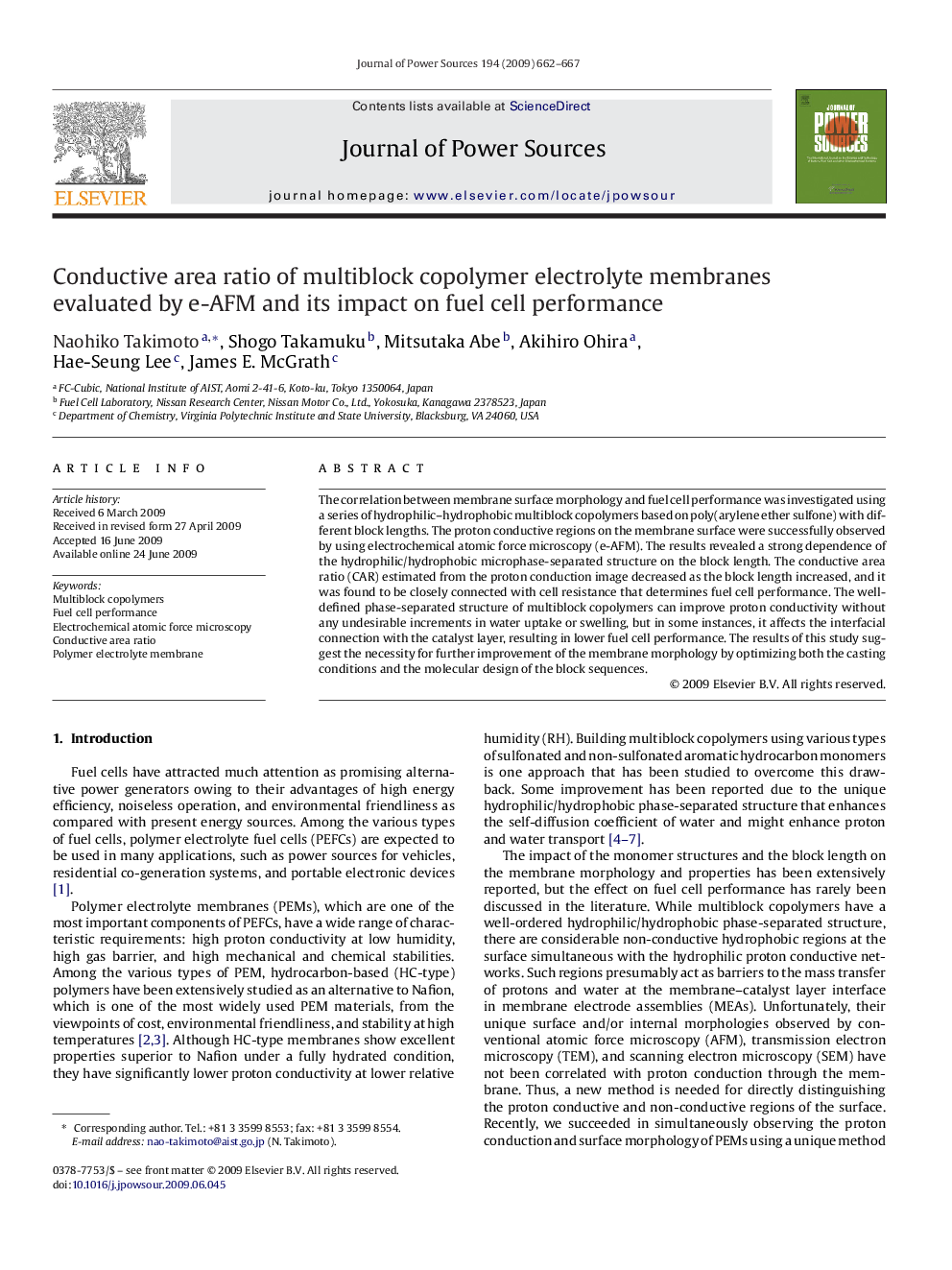| Article ID | Journal | Published Year | Pages | File Type |
|---|---|---|---|---|
| 1294013 | Journal of Power Sources | 2009 | 6 Pages |
The correlation between membrane surface morphology and fuel cell performance was investigated using a series of hydrophilic–hydrophobic multiblock copolymers based on poly(arylene ether sulfone) with different block lengths. The proton conductive regions on the membrane surface were successfully observed by using electrochemical atomic force microscopy (e-AFM). The results revealed a strong dependence of the hydrophilic/hydrophobic microphase-separated structure on the block length. The conductive area ratio (CAR) estimated from the proton conduction image decreased as the block length increased, and it was found to be closely connected with cell resistance that determines fuel cell performance. The well-defined phase-separated structure of multiblock copolymers can improve proton conductivity without any undesirable increments in water uptake or swelling, but in some instances, it affects the interfacial connection with the catalyst layer, resulting in lower fuel cell performance. The results of this study suggest the necessity for further improvement of the membrane morphology by optimizing both the casting conditions and the molecular design of the block sequences.
